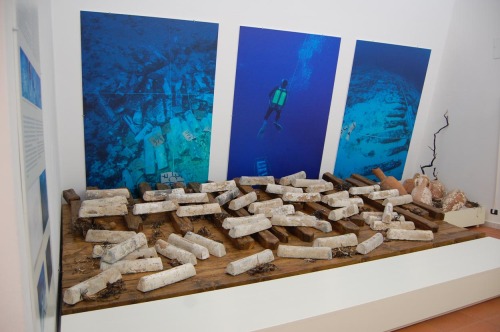Lead ingot with inscribed stamp of the manufacturer. The ingot was found, with other one thousand pi
Lead ingot with inscribed stamp of the manufacturer. The ingot was found, with other one thousand pieces, in a Roman shipwreck located in 1989 in the stretch of sea between the coast of Sinis and the island of Mal di Ventre, in Sardinia. This load of lead ingots is the biggest one ever documented in the ancient world. It was placed in the center of the ship and consisted of about one thousand ingots, all trapezoidal in shape, weighing about 33 kg each. Many of the ingots were still lined up and stacked in their original positions because apparently, the vessel sank slowly and almost vertically without tipping the load. The ingots each have an epigraphic cartouche (mold marks) bearing the name of the manufacturers, such as: Soc(ietatis) M(arci) C(ai) Pontilienorum M(arci) f(iliorum)indicating the “Company [owned] by Marcus and Caius Pontilienus, sons of Marcus”.In collaboration with the National Institute of Nuclear Physics and the Institute of Isotope Geochronology and Geochemistry, CNR of Pisa, numerous analyses were undertaken on the ingots. The results of these analyses have been published and presented at various exhibitions in Europe and America. The analyses have demonstrated the exceptional purity of the metal in the ingots, which came from the Sierra mining region of Cartagena, Spain, which is also probably where the ship sailed from during the first century BC. The final destination of the ship is not known.1st century BC© Museo Civico Giovanni Marongiu, Cabras (Italy) [x] -- source link
#archaeology#history#ancient history#roman history#epigraphy#cabras#shipwreck#sardinia


